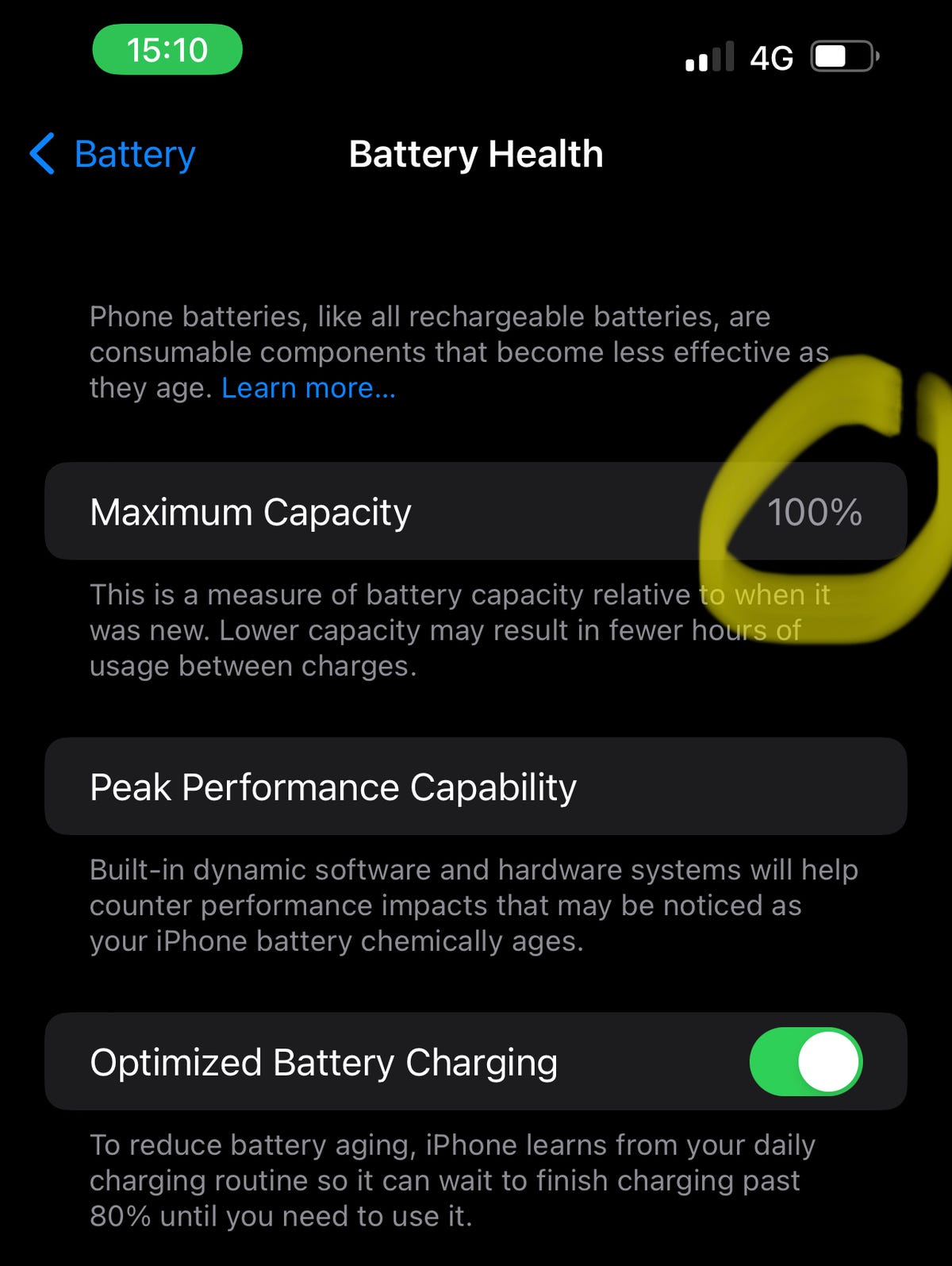For the past few months, I have suspected that the numbers for iPhone battery status don’t really make sense.
Specifically, this is the number that you can see if you go into Settings> Battery> Battery status. It starts at 100%, and slowly decreases until it’s time to replace your battery.
You would think that number is steadily decreasing, but it is not.
And I can prove it.
A battery that defies the laws of physics?
My iPhone 13 Pro Max is dated the day the model was launched (to be more precise, due to a UPS error, I received it a day late). Which means that today, I’ve had it for 104 days. According to the internal data of the battery cycle counting function (click here to find this information), it underwent 92 recharge cycles.
It’s a lot. According to Apple, the battery is designed to retain 80% of its capacity after 500 full charge cycles. Which means the iPhone loses roughly 20% of its capacity after those 500 charge cycles.
So what’s the condition of my battery? Go ahead, guess. And yes, 100%.

How is it possible ? Did the battery defy the laws of physics? Has it not been subject to wear during this period? Well, yes.
If I dig into the scans I can see that the maximum full charge capacity is listed as 4,523mAh (this is probably the first charge), and the minimum full charge capacity (probably the last charge). or a recent charge) is 4,255 mAh.
This is wear and tear. So why isn’t iOS reporting it?
Basically, this “trick” works because the rated capacity of a battery (any battery, not just the iPhone) is theoretical. Some come with more capacity, others with a lot more. The higher the capacity is than the theoretical nominal capacity, the longer it takes for the counter to go from 100% to 99%. It’s all a matter of luck.
Source: ZDNet.com
